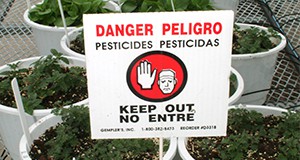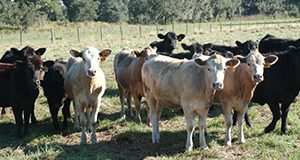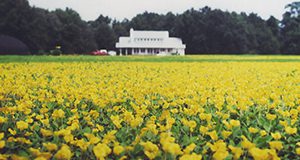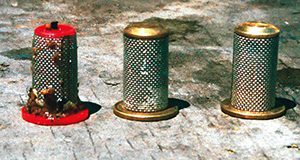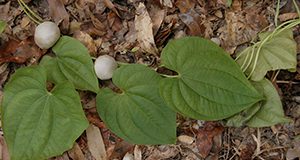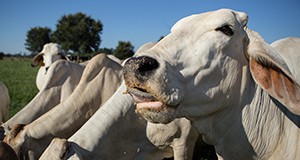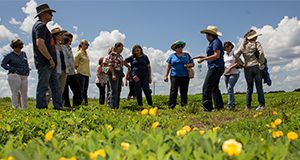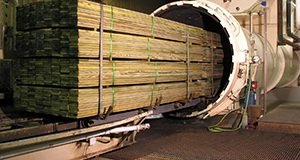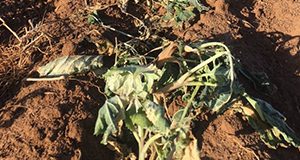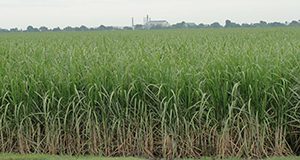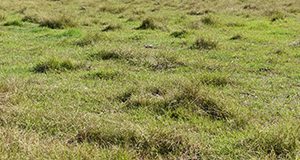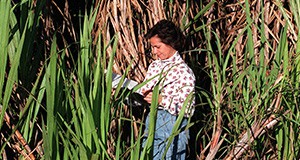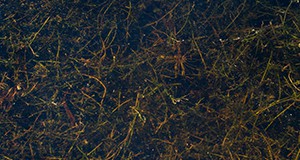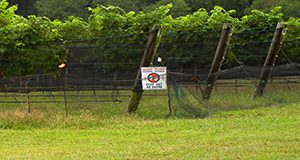This 2-page document addresses the mitigation measures being undertaken by the EPA which will become new labeling requirements for paraquat (one of the most widely used herbicides registered in the United States) products. Written by Frederick M. Fishel and published by the UF/IFAS Agronomy Department, November 2018.
http://edis.ifas.ufl.edu/pi279
Tag: Agronomy Department
A Walk on the Wild Side: 2018 Cool-Season Forage Recommendations for Wildlife Food Plots in North Florida
Nationally, there is great interest in wildlife forages. Florida's light and sandy soils, hot and humid summers, and seasonal droughts pose unique challenges for successful food plot plantings. This 5-page document provides updated cool-season forage recommendations for wildlife food plots in north Florida. Written by A. R. Blount, M. Wallau, H. K. Ober, E. Rios, J. M. B. Vendramini, J. C. B. Dubeux, Md. A. Babar, C. L. Mackowiak, and K. H. Quesenberry, and published by the UF/IFAS Agronomy Department, revised November 2018.
http://edis.ifas.ufl.edu/ag139
Brazilian Peppertree Control
Brazilian peppertree is encroaching upon nearly all terrestrial ecosystems in central and south Florida. This 5-page document discusses the plant's habitat, identification, characteristics, and biology as well as control methods. Written by K. T. Gioeli, S. F. Enloe, C. R. Minteer, and K. A. Langeland, and published by the UF/IFAS Agronomy Department, revised November 2018.
http://edis.ifas.ufl.edu/aa219
Forage-Based Heifer Development Program for North Florida
Developing replacement heifers to become productive females in the cow herd is a tremendous investment in a cow-calf operation that takes several years to make a return. Fortunately, there are several options to develop heifers on forage-based programs that can help reduce costs while meeting required industry performance targets. This new 4-page document proposes a model for replacement heifer development based on forage research trials at the UF/IFAS North Florida Research and Education Center (UF/IFAS NFREC) in Marianna, FL. Written by Jose Dubeux, Nicolas DiLorenzo, Kalyn Waters, and Jane C. Griffin, and published by the UF/IFAS Agronomy Department, October 2018.
http://edis.ifas.ufl.edu/ag424
Ecosystem Services Provided by Grass-Legume Pastures
Grasslands produce far more than beef and milk. They provide ecosystem services that benefit people and the environment. This new 3-page document discusses how integrating forage legumes into grasslands enhances their capacity to provide ecosystem services, such as C sequestration, habitat for wildlife and pollinators, water catchment and purification, and nutrient cycling. Written by Jose Dubeux, Jr., Lynn Sollenberger, Mark Mauldin, and Liza Garcia, and published by the UF/IFAS Agronomy Department, October 2018.
http://edis.ifas.ufl.edu/ag423
Licensing of Commensal Rodent Trappers
The Florida Department of Agriculture and Consumer Services’ Bureau of Licensing and Enforcement administers Limited Certification Categories to certify Governmental or Private applicators. This 2-page document discusses the Limited Commercial Wildlife Trapper Certificate. Written by Frederick M. Fishel and published by the UF/IFAS Agronomy Department, October 2018.
http://edis.ifas.ufl.edu/pi278
Clean the Sprayer to Avoid Crop Injury
The objective of this 5-page document is to present the correct clean-out procedure for spray equipment following pesticide use. Written by Frederick M. Fishel and published by the UF/IFAS Agronomy Department, August 2018.
http://edis.ifas.ufl.edu/pi277
Integrated Management of Non-Native Plants in Natural Areas of Florida
While natural areas are conservation lands that have been set aside for the purpose of preserving (or restoring) native plant and animal communities, they do require active management. One of the greatest management issues in natural areas is invasive plants. This 35-page publication provides land managers in Florida with current methods used to manage non-native plants. Written by Stephen F. Enloe, Ken Langeland, Jason Ferrell, Brent Sellers, and Greg MacDonald, and published by the UF/IFAS Agronomy Department, revised July 2018.
http://edis.ifas.ufl.edu/wg209
Mycotoxins in Florida Pastures
Beef cattle producers in Florida have expressed concerns about the potential presence of mycotoxins in summer perennial forages. In other regions of the US, mycotoxins in forage crops have caused productivity and economic losses. This 3-page fact sheet provides information about the current state of knowledge regarding mycotoxins in Florida perennial grass pastures. Written by Marcelo Wallau, Brittany Justesen, Ann Blount, Luiz Ferraretto, Glen Aiken, and Aaron Stam, and published by the UF/IFAS Agronomy Department, August 2018.
http://edis.ifas.ufl.edu/ag422
Strip-Planting Rhizoma Peanut into Grazing Systems
Nitrogen (N) is one of the major off-farm inputs in livestock systems, either in the form of N fertilizer or purchased feed. Fortunately, you can reduce those expenses by growing your own nitrogen using forage legumes. Rhizoma perennial peanut (RPP) is a legume adapted to the Florida environment that grows well in mixtures with bahiagrass. This 4-page fact sheet discusses varieties, establishment, weed management, grazing management, and the cost-share program. Written by Jose Dubeux, Lynn Sollenberger, Joao Vendramini, Marcelo Wallau, Ann Blount, Liza Garcia-Jimenez, Erick Santos, and David Jaramillo, and published by the UF/IFAS Agronomy Department, July 2018.
http://edis.ifas.ufl.edu/ag421
Wood Preservatives
This 6-page document describes the purpose of applying preservatives to various wood products. A description of wood preservatives registered for use in Florida is also provided. Written by Frederick M. Fishel and published by the UF/IFAS Agronomy Department, July 2018.
https://edis.ifas.ufl.edu/pi276
Specifically Regulated Pesticides in Florida-Bromacil
Bromacil is a general use pesticide that is marketed in Florida under many names and is used on sites such as citrus, pineapple, and industrial areas. This 2-page document discusses the characteristics and use of bromacil. Written by Frederick M. Fishel and published by the UF/IFAS Agronomy Department, May 2018.
http://edis.ifas.ufl.edu/pi112
Frost Damage of Carinata Grown in the Southeastern US
Brassica carinata is an annual oilseed crop used for the commercial production of jet fuel. One of the challenges to commercialization of this crop in the southeastern United States has been frost damage. This 4-page fact sheet discusses symptomology and ways to minimize risk of frost damage to carinata. Written by Michael J. Mulvaney, Ramdeo Seepaul, Ian Small, David Wright, Silvana Paula-Moraes, Carl Crozier, Paul Cockson, Brian Whipker, and Ramon Leon, and published by the UF/IFAS Agronomy Department, May 2018.
http://edis.ifas.ufl.edu/ag420
Florida Crop/Pest Profile: Sugarcane
Sugarcane (Saccharum interspecific hybrids) is the main source of sugar in the world. It is grown in more than 90 countries in tropical and subtropical regions. Cultivation techniques and production challenges vary by location (Rott 2017; Rott 2018). This 19-page document discusses characteristics of the sugarcane crop and pests affecting its production in Florida, which is the largest producer of sugarcane in the United States. Written by P. Rott, D. C. Odero, J. M. Beuzelin, R. N. Raid, M. VanWeelden, S. Swanson, and M. Mossler, and published by the UF/IFAS Agronomy Department, revised May 2018.
http://edis.ifas.ufl.edu/pi207
Brunswickgrass or Paspalum nicorae: A Weed Contaminant in Southern Pastures and Bahiagrass Seed Production Fields
Brunswickgrass (Paspalum nicorae Parodi) is becoming a problematic weed in summer perennial grass pastures in the Southeast. The plant is competitive with bahiagrass
and bermudagrass. Since it is less palatable, it can eventually dominate a perennial grass pasture. Brunswickgrass has become naturalized and has reportedly contaminated bahiagrass seed fields and pastures in the southeastern states, including some of the important counties for seed production in Florida, such as Gilchrist, Levy, Alachua, Citrus, and Sumter. This 4-page fact sheet provides an overview of brunswickgrass and discusses its appearance, variety/germplasm, and management. Written by Ann Blount, Marcelo Wallau, Brent Sellers, Dennis Hancock, Leanne Dillard, Jose Dubeux, Cheryl Mackowiak, Joao Vendramini, and Clay Cooper, and published by the UF/IFAS Agronomy Department, April 2018.
http://edis.ifas.ufl.edu/ag408
Sugarcane Cultivar Descriptive Fact Sheet: CPCL 02-6848 and CPCL 05-1201
CPCL 02-6848 and CPCL 05-1201 are emerging sugarcane cultivars in Florida. Both cultivars were released commercially in 2012 and were quickly adopted by local sugarcane growers because of high yields and moderate to high resistance against major sugarcane diseases in Florida. This 4-page fact sheet provides basic information and yield and disease information to assist growers in management of these cultivars. Written by Hardev Sandhu and Wayne Davidson, and published by the UF/IFAS Agronomy Department, March 2018.
http://edis.ifas.ufl.edu/sc104
Efficacy of Herbicide Active Ingredients Against Aquatic Weeds
Weed control is often a critical component of aquatic vegetation management in Florida waters. While physical, mechanical, and biological controls are utilized where they are feasible, herbicides are the primary tool used to control many troublesome species. This document answers some common questions and provides efficacy information for all herbicide active ingredients labeled for aquatic use in Florida. Written by S. F. Enloe, M. D. Netherland, W. Haller, and K. Langeland, and published by the UF/IFAS Agronomy Department, revised February 2018.
http://edis.ifas.ufl.edu/ag262
Pesticide Injection and Drenching
Drenching and injection are two pesticide application methods that are particularly effective in controlling some of the most troublesome insect pests of ornamental landscape trees. This 4-page document describes the equipment and procedures you will need to carry out either of these methods. Written by Frederick M. Fishel and published by the UF/IFAS Agronomy Department, January 2018.
http://edis.ifas.ufl.edu/pi274
Worker Protection Standard: Requirements for Agricultural Employers of Workers and Handlers
Safety is a high concern for agricultural employers whose workers deal with hazardous materials, such as pesticides. In 1992, the US Environmental Protection Agency (EPA) issued the Worker Protection Standard for Agricultural Pesticides (WPS), a regulation that requires agricultural employers to take steps to reduce pesticide-related risks for their workers and handlers. This five-page document describes the responsibilities of employers who must adhere to the WPS. Written by Frederick M. Fishel and published by the UF/IFAS Agronomy Department, January 2018.
http://edis.ifas.ufl.edu/ag417
Worker Protection Standard: Additional Requirements for Agricultural Employers of Workers
The Worker Protection Standard (WPS) Act for Agricultural Pesticides was established by the US Environmental Protection Agency in 1992 and has undergone several revisions since. Recent revised provisions became effective in January 2017. This document will address the additional requirements for agricultural employers of workers under the revised WPS. Written by Frederick M. Fishel and published by the UF/IFAS Agronomy Department, December 2017.
http://edis.ifas.ufl.edu/pi273
